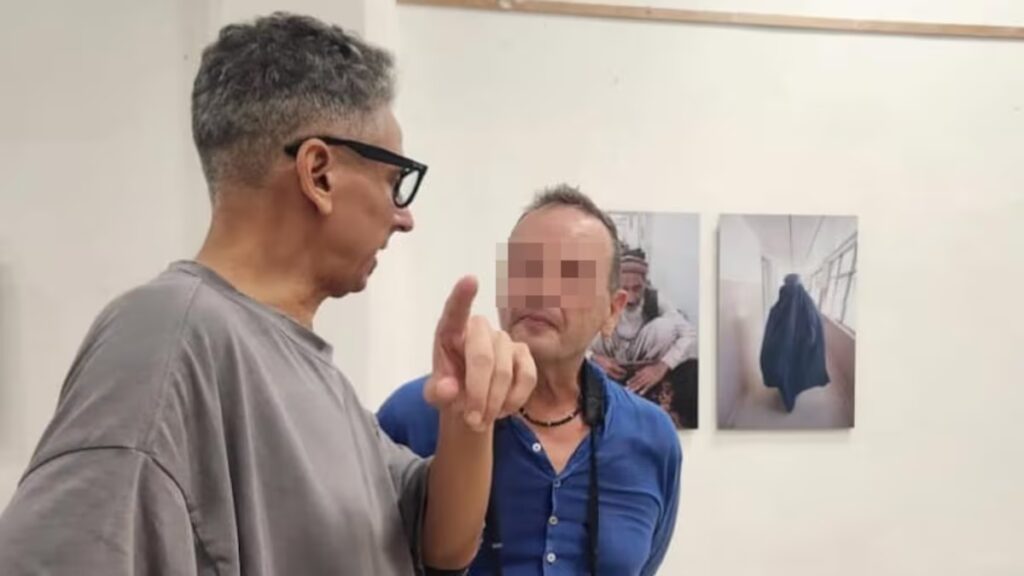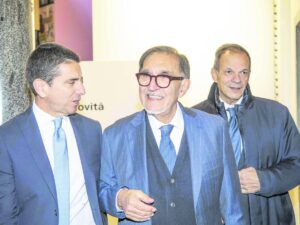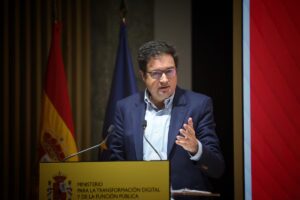
Martiño Ramos Soto, Martín Soto to the Cubans who knew him on the island, has moved around Havana like a fish to water since arriving in the Cuban capital last summer, a fugitive from Spanish justice while sentenced to 13 years and six months in prison for sexually abusing a 12-year-old student in Galicia. There he lived peacefully until his crimes were made public and this Monday his arrest was announced, carried out by the National Revolutionary Police (PNR).
Those who cared for him during his months of “illegality” in the Caribbean country’s capital knew nothing of his legal situation and criminal behavior until the news was revealed this weekend. To everyone he was just another Spanish citizen wandering around town, a businessman with a breakalways with the camera in tow, walking through exhibitions, talking to artists and young models, enjoying drinks, smiles and music.
The Cuban artistic community is present shock since the news broke. Photos of Martiño at public events and the surprise of those who knew him appear on WhatsApp groups. A few weeks after settling into a rented house in Vedado Habanero, very close to the central 23rd Avenida, the fugitive began to build a network of contacts with Havana artists, through his presence in cultural, institutional or independent events organized in the city. An Instagram profile was opened where there was Martín Soto, his Spanishized name, with his maternal surname. From there he contacts young artists and models, follows reports of cultural projects, with whom he shares the images he takes with his camera on the occasion of such events. He tried to make himself indispensable.
This is how he arrived on October 31 at the Nodo Habana cultural center, at the intersection of Malecón and Lealtad streets, to participate in a poetry event that takes place on the last Friday of every month. It is a space open to the public and Martín was noticed, camera in hand, because he was the only foreigner present that day. From the institution they say he arrived, he offered to take photographs of the poetic meeting, which he would then send e-mail and so they would remain as a graphic reminder of what happened. Those who were there remember his cordial treatment.
Adolescent behavior
Among the participants was Iré Lázara Goitizolo Rodríguez, a young plastic artist and poet photographed by Martiño. She remembers that it seemed strange to see him photographing and filming the girls for so long. The next day, at another event, they met again. He approached. He was with a couple of girls who looked like models. “His behavior was adolescent and I was surprised to see him, such an adult, involved with so many girls. He even asked me if I was going to a listening party in El Vedado, from Rosalía’s new album. “He seemed very worried about knowing the events that were happening in Havana,” says the young woman, who shares with EL PAÍS screenshots of WhatsApp conversations with Ramos Soto, in which they talked about issues related to art. “He gave his contact with great availability,” he says.

No news from Martín Soto since Friday
Martín Soto took photographs, then got in touch with the portraits, personally or via Instagram, and sent the images to the young artists. This is what he did during his four months in hiding, between Cuban contemporary art events, such as the Event Post-It, Photographic November, the exhibition homage to Belkis Ayón, I and my soul love you. The testimonies collected define Martín Soto as a very sociable person, who offered little information about his life and limited himself to saying that he was a businessman, that he had a consultancy company in Spain, that he had taken time to be on holiday, but did not provide further details.
Martín Soto had several plans this week with his acquaintances in Havana, but those who dealt with him did not hear from him again Friday morning; They also went to the house where he lived, but no one opened the door. He also stopped answering the phone. A young model who posed for him discovered who he really was when they started leaving messages on an Instagram post they shared. She tried to contact him, but never heard back on Friday.
Another young Cuban photographer, who did not want to be identified, interacted several times with Martín Soto after he contacted her through that social network. Now she feels dismayed. “He was a smart guy, with good conversation and you’re shocked when you find out what a monster he is. Why did he want to meet so many people? Why did he take so many photos and expose himself so much here?”

During his stay in Cuba, Martiño Ramos did not stop exposing himself and acting with the most surprising impunity. A worker from the Fototeca de Cuba, the official cultural institution that organizes the cycle of activities Photographic Novemberhe claims to have seen practically all the rallies of the season. It was thanks to the circulation of images linked to this event that we became certain about the whereabouts of the fugitive. “This man, it must be clarified, did not participate Photographic November like an artist. He just posed as a photographer and came as another spectator. “He snuck into our community,” explains the specialist, who briefly treated Ramos around Nov. 6, during a presentation.
She finds it significant that Martiño disappeared on Friday morning, two days before the media first reported that he was in Havana, leading her to think he was warned before the news broke. After hours of uncertainty, it became known Monday afternoon that Ramos Soto had been arrested by Cuban authorities, although the government had not officially commented on the case until Monday evening.
“The stereotype of the elderly foreigner with the young Cuban girl”
Martiño Ramos was walking along the seafront in Havana one day in September 2025 when he met a 23-year-old girl. “He took some photos of me in that place and we started talking. I liked the photos, so I gave him my phone number to send them to me. He seemed like a good person and I had no reason to be wary at that moment”, the young woman, who asks to give her anonymous testimony, tells EL PAÍS.
From that day on they remained in contact. “She seemed like a fairly knowledgeable person, intellectual, empathetic, very feminist, with a fairly soft voice, which seemed harmless,” she recalls. Days later they met in Old Havana, for another photo session, and continued to talk, on other occasions they even went out alone, as friends. “I thought he might be a nice guy, because it’s rare to find a man who masters so many topics and is empathetic. Now I realize he was just using that rhetoric to flirt.” From that day on they spoke every day for a few weeks. One day Martiño invited her and a friend to a party at his house, where several people met. The young woman found it strange that the majority were young women, between 18 and 29 years old. “It seemed very strange to me, so I started distancing myself.”
At another party, after Silvio Rodríguez’s concert on the steps of the University of Havana on September 19, there was a young man who also spoke to EL PAÍS on condition of anonymity. He says he went to meet his girlfriend and, that evening, Martín Soto, who had arrived accompanied by one of his very young friends, approached him to talk. “At first the couple seemed like the stereotype of the older foreigner with the young Cuban and we didn’t like that.” The next day, the disappointment turned into surprise, says the young man, when he realized that Martín had started following his girlfriend’s account on Instagram, something he didn’t do with the accounts of the other photographers present at the evening. “Then we met at other events, but he was a person I wasn’t interested in looking into,” he concludes, recalling Soto’s projection as that of a person who wanted to show himself as a deconstructed man and in favor of the feminist movement.
This Monday Andy Martínez was surprised when he discovered Martiño’s true identity. I had just exchanged a few words with him, but I had seen him four times: the first, at a concert in The green light bulba rather popular place in El Vedado, and the last one, at an intimate party in a bar called The roof of India. “I always walked with the camera up,” he says. Once Martiño Ramos Soto was arrested, the feeling of someone who had been defrauded, mocked and offended spread among those who knew him in Havana. “It’s a mixture of disgust and fear,” confesses one of the young women who interacted with him. “I feel disgusted for having shared with someone like that and for having appreciated him, even a little. And fear, because knowing that he deceived us makes you feel vulnerable. I’m happy to know that he was arrested.”





